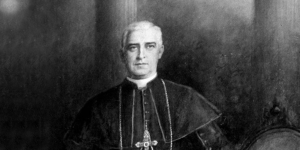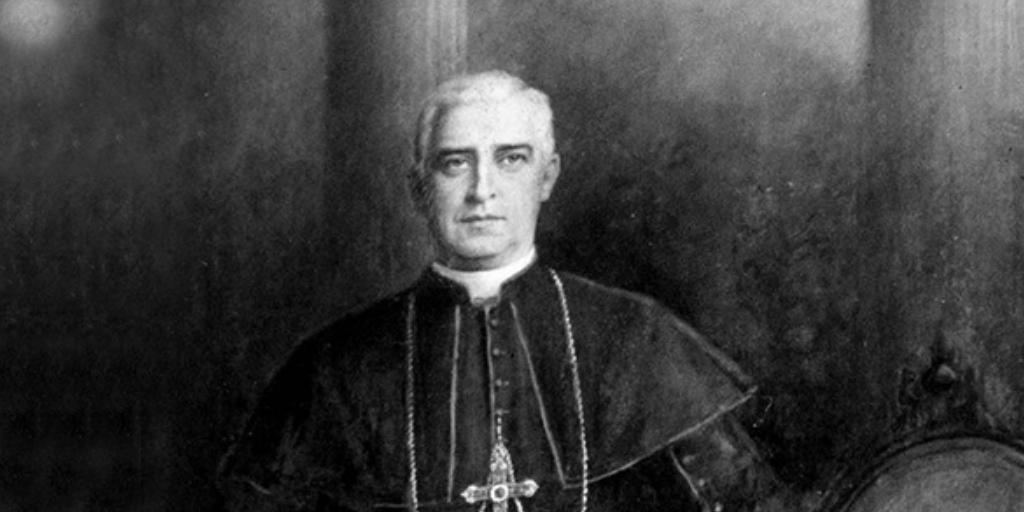
Had it not been for Bishop Thomas Shahan, the National Shrine as we know it may not have existed today. His guidance and leadership helped make America’s Catholic Church a reality, providing support and vision for its spiritual purpose and architectural design. As we observe the 92nd anniversary of his passing into eternal life on March 9, we invite you to learn about his life and work.
1. He was the first person to present a plan for a national church in honor of the Blessed Mother in Washington, D.C. to Pope Pius X in 1913.
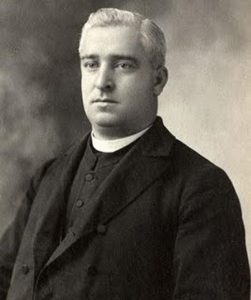 Over a decade before the foundation stone was even placed, Bishop Thomas Shahan had a vision for the National Shrine. In 1910, he wrote of his early plans for the church:
Over a decade before the foundation stone was even placed, Bishop Thomas Shahan had a vision for the National Shrine. In 1910, he wrote of his early plans for the church:
“A glorious Church sheds a warm, emotional, sacramental light, and speaks with a divine eloquence that nothing can equal. I would not presume to dictate the style of it… Its wall spaces and ceilings ought to be covered with noble historical frescoes depicting the origins and glories of Catholics in the United States, and particularly in these parts. Little by little, it would become a museum of the finest statuary, of all the loveliest art in Church plate, vestments, etc., etc. In a word, no one would think he had truly seen the Capital of the Nation unless he had paid a visit to this Church. Inside and outside, it would be a monument of artistic truth and sincerity, and thus a mirror of all the beauties of our venerable and holy religion…”
Following Shahan’s presentation, the Holy Father gave his apostolic blessing and a personal contribution to the project.
2. He strove to create a building that would serve as a “National Monument or testimony” resting “on a national devotion to the Blessed Virgin.”
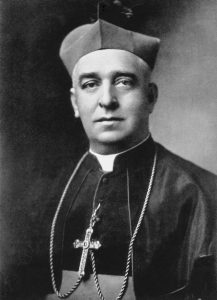 Today, the Basilica is the largest Catholic church in North America, designated by the United States Conference of Catholic Bishops as a National Sanctuary of Prayer and Pilgrimage, and dedicated to the patroness of the United States, the Blessed Virgin Mary, under her title of the Immaculate Conception.
Today, the Basilica is the largest Catholic church in North America, designated by the United States Conference of Catholic Bishops as a National Sanctuary of Prayer and Pilgrimage, and dedicated to the patroness of the United States, the Blessed Virgin Mary, under her title of the Immaculate Conception.
3. He was actively involved in the construction of the National Shrine until his death on March 9, 1932.
Shahan was a critical voice in the stylistic decisions that would be made for the National Shrine’s architecture. Some of the earliest concepts for the church were in the style of a Gothic cathedral, but as a scholar and historian, Shahan felt that the contributions of the modern age could not compete with the basilicas of early Christianity and the cathedrals of the Middle Ages. He envisioned a style combining the symmetry and eloquence of the ancient basilica (Romanesque) with the mystical language of the mosaic and the triumph of the dome (Byzantine).
Architects ultimately settled on this Romanesque-Byzantine fusion in order to create an original design that was “sunk in tradition yet distinctively American.” The Romanesque-Byzantine style was also chosen to be distinct from the Washington National Cathedral, the Gothic Episcopalian cathedral whose construction was underway at the time. It wasn’t until 17 years after Shahan’s death that the superstructure was completed in 1959.
4. The Basilica’s Founder’s Chapel is named after him.
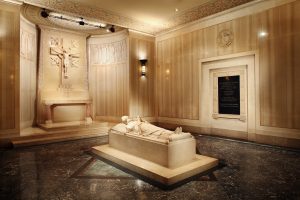
Though the chapel was originally named the “Ave Maria Chapel” by Shahan himself, following his death, Msgr. Patrick O’Connor, sixth director of the National Shrine, gave the space the eponym of the “Founder’s Chapel” to honor Shahan’s memory. The chapel, which was not finished until three decades after Shahan’s death in 1962, features a life-size recumbent statue of Bishop Thomas Shahan created by Charles D. Maginnis using his death mask.
5. To this day, Bishop Shahan remains the only person to be interred at the Basilica.
His body lies three feet below the sarcophagus where he is portrayed in a marble sculpture in the Founder’s Chapel. Today, nearly a century after his passing, the National Shrine embodies Bishop Shahan’s vision in a distinctively American style, serving as a place of worship, pilgrimage, evangelization, and reconciliation.
Sources:
Rohling, Geraldine M., PhD, MAEd. The Basilica of the National Shrine of the Immaculate Conception: Guide and Tour Book. Washington, D.C.: Basilica of the National Shrine of the Immaculate Conception, 2018.
Rohling, Geraldine M., PhD, MAEd. Jubilee 2009: A Photographic History of the Basilica of the National Shrine of the Immaculate Conception, Washington, D.C.: Basilica of the National Shrine of the Immaculate Conception, 2009.

